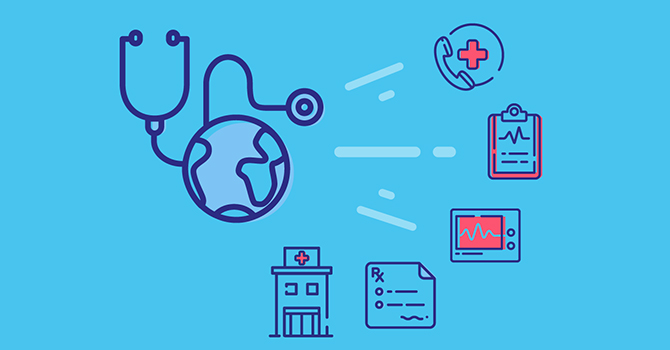The Importance of Healthcare RCM in Enhancing Cash Flow and Efficiency
The Importance of Healthcare RCM in Enhancing Cash Flow and Efficiency
Blog Article
A Comprehensive Overview on How Medical Care RCM Functions to Simplify Invoicing and Collections
Browsing the complexities of healthcare earnings cycle management (RCM) is crucial for carriers aiming to improve their billing and collections processes. The overview unboxes the details of RCM, from individual registration to accounts receivable management, providing insights into maximizing each action.
Comprehending Revenue Cycle Monitoring
RCM is an essential administrative feature that incorporates the entire monetary process of person care, from the preliminary appointment setting to the final repayment of the equilibrium. It is a complex procedure created to determine, collect, and handle the profits from the services given to patients.
The RCM procedure starts when a patient timetables a visit and prolongs via the patient's care journey, consisting of invoicing and collections. A crucial objective is to reduce the time between obtaining and giving a solution settlement, thus enhancing the company's monetary wellness. RCM involves numerous features such as client enrollment, insurance verification, cost capture, coding, declares submission, settlement uploading, and handling charms and rejections.
Trick Elements of RCM
In the realm of Revenue Cycle Administration (RCM), recognizing its crucial components is essential to achieving economic performance within medical care organizations. RCM is a comprehensive process that includes various phases, each crucial to ensuring reliable invoicing and collections. The primary elements include patient registration, insurance policy verification, fee capture, coding, insurance claim entry, payment uploading, and accounts receivable monitoring.


Once coded, insurance claims are sent to payers, where accuracy is extremely important to avoid beings rejected or delays - Healthcare RCM. Settlement posting includes recording the obtained repayments, which enables the reconciliation of accounts. Finally, receivables administration concentrates on tracking and dealing with unsettled insurance claims, making sure prompt follow-up and resolution
Each component of RCM is interconnected, and ineffectiveness in any part can interfere with the entire cycle. Consequently, grasping these aspects is essential for doctor to optimize income and improve their economic health.
Methods for Effective Billing

Standardizing invoicing treatments across the organization is another key strategy. Establishing clear standards for paperwork, coding, and entry assists preserve uniformity and conformity with regulatory requirements. Educating staff on a regular basis on these procedures makes certain everyone is updated with the current adjustments in payment codes and payer plans.
Exact fee capture is important in preventing revenue leakage. Executing routine audits and surveillance systems allows for the recognition and correction of discrepancies before they affect profits. In addition, preserving open lines of communication with payers assists to promptly deal with any disputes or misunderstandings that may emerge.

Finally, appealing patients early in the payment process by supplying clear estimates and instructional materials concerning their financial responsibilities can dramatically decrease complication and enhance repayment timeliness. These approaches collectively add to a more reliable and monetarily healthy and balanced billing system.
Enhancing Collections Procedures
Given the complexities of medical invoicing and the variety of payer requirements, boosting the collections procedure entails applying strategic steps that ensure prompt and accurate settlement of services rendered. Automation devices can aid in tracking claim conditions, sending out timely pointers to patients, and taking care of rejections a lot more efficiently.
Educating personnel to recognize the subtleties of insurance plan and invoicing codes is equally important. This understanding empowers them to address payment discrepancies swiftly and communicate successfully with clients concerning their financial obligations. In addition, clear and clear client interactions Go Here are crucial. Giving thorough descriptions of costs and supplying versatile layaway plan can raise individual satisfaction and timely repayments.
Routine audits of the collections procedure should be conducted to identify locations for improvement and make certain compliance with guidelines. By assessing data, healthcare companies can recognize trends, anticipate prospective issues, and adjust approaches appropriately (Healthcare RCM). Ultimately, a well-enhanced collections process not only sustains monetary wellness but likewise adds to a more smooth experience for people and personnel alike
Optimizing Earnings Streams
Building upon the foundation of a strong collections procedure, medical care companies can further bolster their monetary security by tactically maximizing income streams. This includes a multi-faceted technique, beginning with a thorough evaluation of existing income resources to identify inadequacies and locations for growth. Using sophisticated information analytics devices makes it possible for companies to gain insights right into payer mix, client demographics, and solution usage patterns, allowing for data-driven choices that boost revenue capture.
Executing automated payment systems can substantially lower mistakes and expedite claims refining, making certain that earnings is accumulated extra effectively. Additionally, enhancing payer agreements via routine settlements can improve reimbursement rates and terms, straight impacting the bottom line. Expanding solution offerings, such as including telehealth or health programs, can additionally bring in a more comprehensive person base, hence enhancing profits capacity.
An additional essential internet part is boosting client interaction and contentment, as pleased patients are more probable to stick to treatment plans and make prompt repayments. Providing adaptable repayment options and clear payment techniques can enhance collections and foster client loyalty. Healthcare RCM. By taking on these techniques, health care companies can produce a more durable economic structure, ensuring continual development and stability in an ever-changing find out here sector landscape
Final Thought
In conclusion, medical care Earnings Cycle Monitoring (RCM) plays a critical duty in optimizing billing and collections procedures by incorporating crucial components such as client enrollment, insurance policy verification, cost capture, coding, claims entry, and balance due monitoring. By utilizing sophisticated innovation, systematizing procedures, and promoting person interaction, healthcare service providers can significantly decrease claim rejections, speed up settlement cycles, and improve cash circulation. This extensive strategy to RCM ultimately leads to boosted financial effectiveness and sustainability for medical care companies.
The RCM process starts when a patient schedules a consultation and extends through the person's care trip, including invoicing and collections.An additional essential element is boosting person involvement and fulfillment, as completely satisfied patients are much more likely to stick to therapy strategies and make timely settlements. Using versatile settlement alternatives and clear billing methods can enhance collections and foster person commitment.In conclusion, health care Profits Cycle Administration (RCM) plays an essential function in optimizing payment and collections procedures by incorporating vital elements such as patient registration, insurance verification, charge capture, coding, claims entry, and accounts receivable monitoring. By using innovative technology, standardizing treatments, and cultivating patient involvement, medical care service providers can considerably decrease insurance claim denials, accelerate settlement cycles, and boost cash money circulation.
Report this page